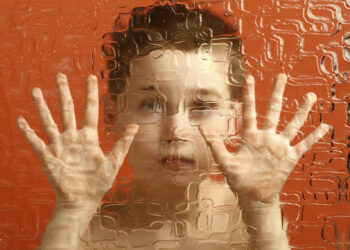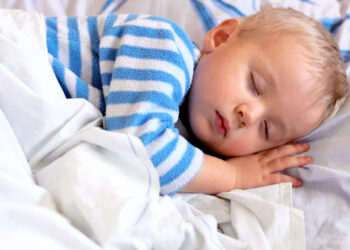Anxiety
What is anxiety?
Anxiety is a normal part of life. It signals threat and is a component of increased arousal levels which are required to perform eg in an exam or in a new situation. It can be healthy as a response to normal stressors. Anxieties have 2 components. The psychological components are the anxious thoughts and fears. The biological component is the effect on the body of adrenaline. This results in a fast heart rate with palpitations, dry mouth, shaking, hyperventilation and feelings of nausea. The biological symptoms interact with the psychological ones and can lead to viscious cycles and worsening of symptoms. Some children and young people develop anxieties that meet diagnostic criteria for a mental disorder. These are however, still common. Though there may be a clear trigger, this is not always the case. However, there will usually be clear maintaining factors for the anxiety and scope to improve protective factors which will lead to improvements in symptoms.
Different types of Anxiety
Panic Disorder
This is a disorder in which the person has panic attacks. These are feelings of high anxiety. The anxiety can present both as thoughts of panic as well as bodily feelings of a high heart rate and palpitations (the sensation of feeling your heart beat), fast breathing and sometimes dizziness and numb feelings around the mouth and in the fingers (due to the fast breathing).
Phobias (eg Heights, social, tight spaces, wide spaces, dogs, snakes, spiders etc)
These are irrational fears of specific things such as heights, snakes or spiders. These can lead to avoidance of the thing/situation and high levels of fear and anxiety.
Obsessive Compulsive Disorder (OCD)
This disorder is characterised by 2 components. The first is recurrent obsessional thoughts, ideas or impulses, that the person often recognises as unusual, and these are often unpleasant and distressing in nature. The second are compulsive acts to ‘magically undo’ the obsessional thoughts. These may be compulsive repetitive thoughts or physical actions. Eg an obsessional thought that touching things will contaminate you. The compulsion may involve repetitive handwashing to stop the intrusive thought. Of note, the compulsions are also unpleasant for the individual. If compulsions are resisted, it can lead to an increase in anxiety.
Post Traumatic Stress Disorder (PTSD)
This disorder occurs after a significantly traumatic incident (or series of incidents). It generally starts within 6 months of the incident and is often characterised by flash backs, sleep problems including nightmares, hypervigilance, an exaggerated startle reflex, panic attacks and can often be linked to depression. The individual might not be able to remember the whole original traumatic experience.
Generalised Anxiety
This is a free floating anxiety about lots of things. It is generalised across settings and persistent in nature.
Acute Stress reactions
These are very common and are anxieties related to exceptional physical and mental stress. They normally subside within hours or days.
Elective Mutism
Often seen as being linked to anxiety, personality features and sensitivity, this condition results in a child or young person being mute in certain situations eg only at school, but not at home.
Red flags
If an anxiety disorder is leading to physical harm eg severe weight loss or skin infections due to hand washing from fear of contamination, severely affecting social or community access, or the anxiety is causing severe mental distress. These all require professional assessment and treatment.
Treatments
Treatments for anxiety disorders fit into 3 areas. Psychological, Biological and Social.
Psychological treatments
These are the mainstay of treatment for anxiety disorders which are not short lived and non-debilitating. The best evidence base is for Cognitive Behavioural Therapy (CBT). This approach looks at thoughts, biological symptoms, emotions and the individual’s actions. It looks for triggers and factors which are maintaining the anxiety disorder and produces solutions to alter the thoughts and behaviours of an individual and thus their emotions and actions. CBT does however require a willing individual that is motivated to resolve their anxieties. The therapy often involves ‘experiments’ which serve to demonstrate that the anxiety is not entirely valid. This will often initially increase anxiety through exposure to the anxiety provoking stimuli but with the end product of improvements in symptoms and thus a general improvement in wellbeing.
There are relaxation therapies available including therapeutic hypnosis. This can help reduce anxieties and may teach relaxation techniques, but it does not directly reduce the anxious thoughts or actions that trigger or are maintaining the anxiety. It is a form of symptom relief. Exposure to the anxiety provoking stimuli can be done whilst in a ‘trance’, which by some is seen as less ‘threatening’ than having to do real life exposure.
EMDR
Eye Movement Desensitization and Reprocessing (EMDR) is a therapeutic approach with a good evidence base for Post-Traumatic Stress Disorder. It involves being guided by a therapist to think about the traumatic experience whilst experiencing a left and right bodily stimulus eg moving your eyes from left to right or tapping knees.
Biological approaches
the mainstay of biological treatments for anxiety are medications. A variety of selective serotonin reuptake inhibitors eg Fluoxetine and Sertraline either have licenses for use in anxieties or are used off-license for this purpose. They should be considered in severe cases of anxiety or when psychological approaches have been tried with limited effect. A medication might allow the psychological approach to be more effective. Symptomatic relief can also be achieved with medications such as beta-blockers that reduce the biological symptom of a fast heart rate. In extremis, antipsychotics or benzodiazepines are used to reduce hyperarousal and sometimes to sedate. Caution should be exercised for the latter approaches with the additional risks of severe or long-term side effects and addictions and advice sought from a child and adolescent psychiatrist or paediatrician with relevant expertise. These require the consideration of effect and side effect and should be prescribed using relevant legislation and best practice eg NICE guidance.
In the case of children and adolescents with an intellectual disability, decisions should be made in their best interests either through the children act (parental responsibility) or the mental capacity act. Medication and Social approaches may be the mainstay of therapeutic intervention for anxiety if the young person cannot access psychological therapies eg they are pre-verbal.
Social approaches- this is either modifiying the environment to reduce anxiety provoking triggers (particularly if the individual is severely debilitated by the anxiety or if they cannot access therapeutic approaches eg anxieties in intellectual disabilities and/or autism), providing an environment for the treatment of severe mental illness eg psychiatric hospital or more commonly simply offering social support either through family and friends or through services eg social care or child and adolescent mental health services.
Prognosis
Many day to day anxieties are normal and self-limiting. Anxiety disorders are of an order that they interfere with access to social/environmental situations, cause mental distress and might even cause physical harm. Treatment should be offered for these, however the agreement of the individual affected is usually required to achieve this.



